#steppes
Photo


Kyrgyzstan, Scott Turner.
#kyrgyzstan#central asia#horses#landscapes#landscape photography#mountains#equine photography#steppes#nomadic
1K notes
·
View notes
Text
Review of The Horse, the Wheel, and Language: How Bronze-Age Riders from the Eurasian Steppes Shaped the Modern World by David W. Anthony

I will be upfront, it is a very technical book. If you are not well versed in the anthropological categorizing of cultures and time periods of the areas being discussed it can be very difficult to keep up with the more finite points the author is making. That being said, I had never heard of any of the specific cultures being discussed in the Danube Valley and was still able to enjoy this book and its well put together analysis of various aspects of language, culture, technological developments and shifts in behaviors and place.
If you are especially interested in any of the major themes this book discusses (which is in all honesty is an extensive list including but not limited to; the development of Indo-European language, the time periods and locations as well as likely motivation for domestication of various livestock types, the cultural effects of technological developments on the peoples of the Eurasian Steppes and their migration/trading patterns) I do highly recommend. It is heavy reading but extremely illuminating.
#The horse the wheel and language#David W Anthony#historical anthropology#anthropologist#anthropology#ancient languages#language#historical linguistics#linguistics#proto indo european#indo european#steppes#eurasian#eurasian steppe#horse#horses#husbandry#burials#Cattle#sheep#book review
158 notes
·
View notes
Photo
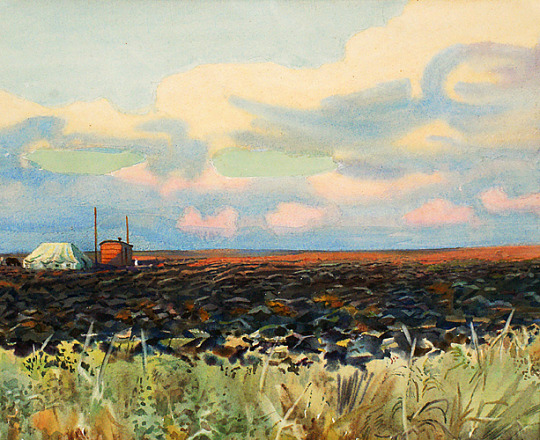
Evening Over the Steppes by Kostiantyn Phillipov, 1955
169 notes
·
View notes
Text

Various German armoured vehicles advance through the Steppes during the Battle of Slutsk - Belarus, June 1941. In the foreground is an Sd.Kfz.253 armoured personnel carrier, in the background Pz.Kpfw.III and Pz.Kpfw.II tanks and an Sd.Kfz.251 armoured personnel carrier.
#world war two#1940s#worldwar2photos#history#ww2#wwii#ww2 history#wwii era#world war 2#ww2history#wehrmacht#eastern front#belarus#1941#steppes#halftrack#panzer#battle of slutsk
69 notes
·
View notes
Text
The tag "Indigenous Russian" is a means of giving attention to groups that are Indigenous within the Russian Federation. These people are Indigenous. Not Russian. It's difficult to explain without the tag and using it as a means of correlation otherwise the association would be more challenging to find. The Indigenous are mostly populated in the steppes, Siberia, Eurasia, and in the Caucasus. I do my best to bring awareness to these groups as there is active erasure happening.
#indigenous#culture#indigenous russia#indigenous russian#russia#important#fypシ#colonization#fypage#landback#Siberia#Eurasia#indigenous people#steppes
26 notes
·
View notes
Text
Make a sitcom about ghengis Khan, let it sit for ten years, then do a young-sheldon-style reboot where ghengis is a child, call it "baby steppes"
#196#shitposting#murdering babies#is this anything#ghengis khan#steppes#young sheldon#ben shapiro as baby ghengis khan
7 notes
·
View notes
Text
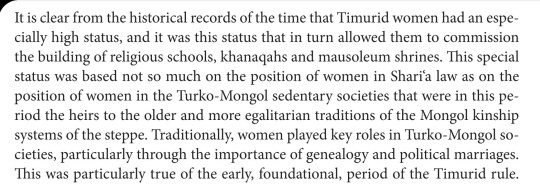
“Afghanistan's Islam: From Conversion to the Taliban”
Edited by Nile Green, 2017
8 notes
·
View notes
Text
#marceline the vampire#steppes#spotify#new music#song recommendation#music#alternative/indie#alternative#indie#graveey#graveey recommends songs#adventure time#marceline the vampire queen#halloween music#halloween#Spotify
3 notes
·
View notes
Text

A man with a camel in the steppes west of Baku, 19th century, photo by D. Ermakov.
5 notes
·
View notes
Text
Cultural divides & disparities that are somehow still defined as “Hinduism”
The Vishnu-central Puranas, which contain the story of the churning ocean and golden egg, are associated with the Vaishnavite tradition of Hinduism. Later on, the emphasis from the golden egg switches to ‘Matsya’ a fish still associated with Vishnu who protects the Vedas. The churning ocean & golden egg myth is also found in Greek mythology. Further turtle creation myths are also found in ‘Native American’ and Chinese mythology, likely due to a Central Asian root.
MESOPOTAMIA: OLDEST ATTESTED CREATION MYTHS
Dating to the third millennium BCE, the Sumerian creation myth is called the "Eridu Genesis", the oldest attested creation story of the world. In this story, the god Enki creates humanity to serve as slaves for the gods, but later intervenes to save them from a great flood.
The universe is described as a vast, dark, and watery abyss known as "Nammu" (also the name for a goddess associated with water, incantations and protective water). From this primordial chaos, the god Marduk is said to have emerged and created the heavens and the earth. The myth describes a battle between Marduk and the chaotic forces of the universe, which Marduk ultimately defeats in order to create order and establish his own reign as the supreme god. The universe is therefore portrayed as a dynamic and ever-changing realm, with divine power constantly struggling against chaos and disorder.
Enuma Elish, a Babylonian creation myth, is one of the oldest surviving works of literature in the world, dating back to the 18th century BCE. The story is written on seven clay tablets, which were discovered in the ruins of the ancient city of Nineveh in modern-day Iraq in the 19th century. The Enuma Elish tells the story of the creation of the world and the struggles between the gods that led to their establishment of order and their dominance over the forces of chaos. The myth centers around the god Marduk, who defeats the primordial goddess Tiamat and creates the universe out of her body, and is elevated to the position of supreme God.
Similar to Mesopotamian mythology, in Shaivism and Shaktism, there is a vast, dark abyss or void that exists before creation. They also share the idea of a dynamic universe of creation and destruction. In Shaivism, this dynamic universe is often symbolized by the dance of Lord Shiva, which represents the continuous cycle of creation, preservation, and destruction. In Shaktism, the universe is seen as a manifestation of the Divine Mother's creative energy, which is constantly flowing and changing.
The creation of humans as a result of a union between a god and a goddess in the Eridu Genesis and creation is a one-time event. However, in Shaivism and Shaktism, humans are seen as an extension of the divine, created to experience and realize the ultimate truth and creation & destruction is cyclical. These differences may stem from later developments, such as in the Indus Valley (Melakam) or later, under Shamanic influences.
Samana or ‘Shramana’ traditions were more concerned with the nature of reality and the human condition than with the origins of the universe.
They do not feature a golden egg or turtles or other creation myths. Rather, their theories tend to focus on the cyclical nature of the universe and the laws of karma and rebirth, advocating personal spiritual liberation through meditation, ethical conduct, and renunciation of worldly attachments. There is no beginning or end to the eternal, infinite universe in the various Shramana movements.
In Jainism, there is a story of a cosmic serpent named Ananta or Shesha, who supports the universe on his hood further illustrating the Jain concept of the universe as eternal and infinite, with no beginning or end.
VAISHNAVISM
The turtle myth may have originated from a common ancestral mythology that was shared by different cultures across Eurasia and North America. The turtle myth may have originated from the ancient cultural and linguistic exchanges that occurred between peoples of the Steppes region of Central Asia and the surrounding regions.
The story of the golden egg is primarily associated with the Rig Veda and the later Puranas, particularly the Brahmanda Purana, and is not mentioned in the Matsya Purana:
According to the Matsya Purana, the creation story of the Matsya avatar begins with a demon named Hayagriva, who steals the Vedas (the sacred scriptures of Hinduism) from the god Brahma. To retrieve the Vedas and protect them from the demon, Vishnu takes the form of a fish and goes to the bottom of the ocean where the demon is hiding.
Once there, Vishnu reveals his true identity to the demon and engages him in battle. After a fierce fight, Vishnu kills the demon and retrieves the Vedas. However, while he is in the form of a fish, a great flood occurs, and the waters rise until they cover the entire earth.
In order to save the earth and all living beings, Vishnu instructs a king named Manu to build a large boat and to take aboard one of each species of animal and plant. Vishnu then pulls the boat through the flooded waters using his horn, which he has transformed into a rope.
As the flood recedes, the boat comes to rest on the top of a mountain, and Manu and the animals disembark. Vishnu then transforms back into his human form and appears to Manu, revealing the reason for the flood and the importance of preserving the Vedas and all living beings.
SHAIVISM & SHAKTISM
In Shaivism, the creation myth is generally associated with the god Shiva. According to one version of the myth, at the beginning of time, the universe was nothing but darkness and chaos. Shiva, in his role as the destroyer, performed the cosmic dance of destruction (Tandava) on top of a demon (Apasmara). This caused everything to dissolve into a state of emptiness. From this emptiness, a new universe began to emerge, which Shiva then helped to shape and give form to. Shiva is often associated with the concept of time, and is said to exist beyond time and space.
There are stories that mention the mountain Kailash as the abode of Lord Shiva, and the river Ganga (Ganges) flowing from the matted locks of his hair. In some Shaivite creation myths, the serpent Vasuki is also mentioned as playing a role in the churning of the cosmic ocean.
The five elements: Shaivite creation myths often describe the universe as being made up of the five elements: earth, water, fire, air, and ether. These elements are seen as the building blocks of all existence. The role of karma: Shaivite creation myths often emphasize the role of karma in shaping the universe. Good deeds are seen as leading to positive outcomes, while bad deeds lead to negative ones.Parvati, is often portrayed as the creative force behind his destructive power. In some Shaivite myths, she is even depicted as the primary creator of the universe:
In Shaktism, the creation myth is often associated with the goddess Devi or Shakti. According to one version of the myth, at the beginning of time, the universe was shrouded in darkness and chaos. The goddess Devi, in her form as the Great Mother, emerged from the emptiness and created the universe through her divine powers. Shakta creation myths often emphasize the importance of the feminine in the creative process. The goddess is seen as the embodiment of creativity, nurturing, and love. She is often associated with the power of creation, as well as the power of destruction and transformation.
Mount Meru is seen as the centre of the universe where Shiva & Shakti dwell - a place of spiritual power and enlightenment, where devotees of Lord Shiva often undertake pilgrimages to the mountain in order to seek his blessings. In Shaivite mythology, the guru plays an important role in guiding the devotee on the path to liberation, while in Shakti mythology, the goddess herself is often seen as the guru and guide. In Shaivite mythology, Lord Ganesha and Lord Murugan are important figures, while in Shakti mythology, the goddess Kali and the ten Mahavidyas are revered. In Shakti traditions, the worship of the goddess is often accompanied by rituals involving the use of intoxicants and blood sacrifice, while in Shaivite traditions, such practices are generally frowned upon.
Both Shaivism and Shaktism acknowledge the concept of cyclical time, in which the universe is created, sustained, and destroyed in a continuous cycle. Interestingly, Shakti mythology places a strong emphasis on power and energy, while Shaivite mythology focuses more on the idea of liberation and transcendence.
Other cosmic dance creation myths:
In ancient Greek mythology, the god Zeus was said to have danced the cosmos into existence.
In the Navajo tradition, the Holy People danced the universe into existence, with each dance creating a new part of the world.
The ancient Chinese myth of Pangu tells the story of a cosmic egg that hatches and forms the world. Pangu is said to have danced to create the separation of yin and yang and the formation of the world.
The Māori people of New Zealand have a creation myth in which the god Tane danced to separate his parents, Rangi and Papa, who were locked in a tight embrace and preventing the emergence of light and life.
#hinduism#steppes#turtle#creation story#mythology#turtle mythology#tortoise#turtles#ancient history#ancient civilizations#ancient civilization#tocharian#indigenous#native american#creation myth#creation#india#south asia#matsya#vishnu#vishnu purana#aryan invasion#dravidian#tamil#rig veda#puranic#puranas#matsya purana#eurasia#central steppes
3 notes
·
View notes
Text
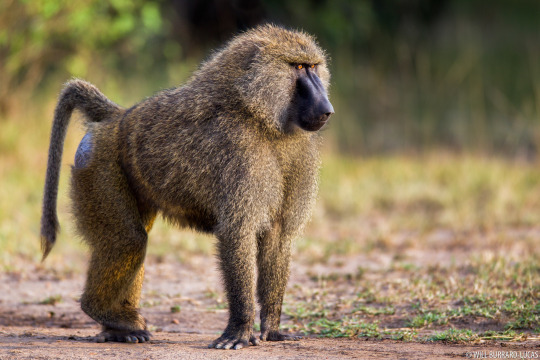
OLIVE BABOON!
Origin: Africa
Inhabit savannahs, steppes, forrists
Has a cheek pouch to store food
Female dominance is hereditary
Omnivores: will eat almost anything, birds, fungi, spiders, scorpions bark and flowers ... Wikipedia
3 notes
·
View notes
Photo


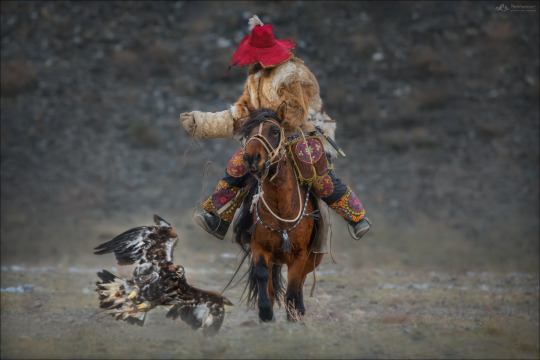
The Altai Eagle Festival hosted in Mongolia, Vlad Sokolovsky.
#golden eagles#mongolia#eagle hunting#horses#animal photography#steppes#mountains#nomadic games#nomads#people#animals#my post#asia#northern asia
253 notes
·
View notes
Text
Prompt 1: Cross
Jaliqai did her best to go back to the steppes as often as she could. Her own family clan were so far flung with various jobs and tasks around the world that it was nice some days to just return to the familiar and visit other family groups within the Kha or Mol and to just, be.
Her little grey pony moved across the grasslands towards familiar grazing with increased urgency so much so that Jali had to often hold her back so as not to tire her. Even if there is nothing more she would enjoy than a good breakneck race across the steppes but she also knew she was close enough to several settlements and encampments that scattering the inhabitants herds would earn her no friends.
As the sun crested past its high point, she finally sighted her grandmothers home clan of Mol and their banners waving in the breeze. Several herds of fluffy sheep were scattered as the base of the terrace they were camped on and it was one such group that had her pause her pony and watch with some confusion.
Three small figures wearing Mol colours seemed to be trying to move their fluffy charges around using sticks. The wind carried snatches or words her way and the sound of laughter as one of the three figures was hip checked by the black sheep it was trying to guide, sending them to the ground.
She guided her mount closer until the voices became clearer and one of them spotted her, waving in her direction.
“What are you doing?” She slid off the ponies back and looked over the whole affair curiously, there seemed to be patterns of stones on the ground, creating a grid of sorts. In several of the squares, was one of the sheep, waiting patiently and chewing as whatever greenery it could reach. Others milled around in a cluster of black and grey fleecy bodies.
“Playing crosses!” The smallest of the three, a boy with shockingly orange hair said, bouncing as he waved his stick.
“Crosses? With sheep?” Jali cocked her head a little as the other two nodded eagerly.
“Yeah! We have two colours and just watching the sheep was booooooooooring” The taller boy answered while the girl beside him turned to the pack and nudged a grey sheep out of the bunch to a square in the grid. “First one to get 5 of one colour into a cross wins!”
“Oh. And is it working?”
“Well, sometimes.” Suddenly there is a piercing whistle and the sheep all lift their heads and turn as one towards a tall figure moving toward them. All three children immediately make dramatic sounds of disappointment.
“We never get to finish...” The girl laments and they move to follow their charges, leaving the crosses grid empty in the grass. Jaliqai watches them go with a somewhat bemused expression. She loved coming home.
7 notes
·
View notes
Photo
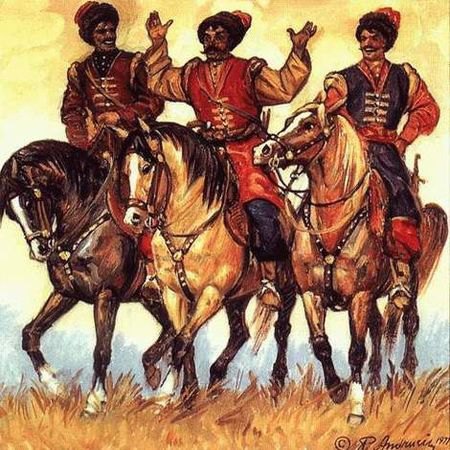
Telling a Joke in the Steppes by Petro Andrusiv, 1977
181 notes
·
View notes